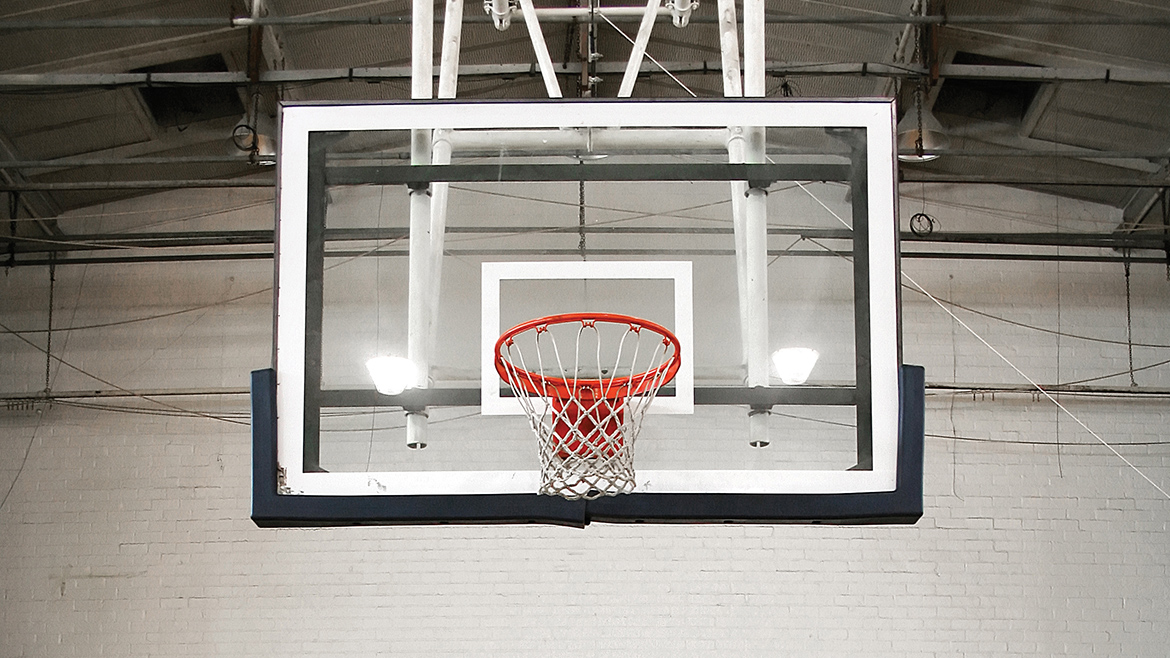If You Build It
 CoMo is building new facilities for youth sports — and hoping to recruit big-dollar tournaments to fill them.
CoMo is building new facilities for youth sports — and hoping to recruit big-dollar tournaments to fill them.
Long before Mike Griggs could take panoramas on an iPhone, he carried around a 35mm camera.
It was the family camera and was used to document vacations, parties, holidays, sports events and everyday family activities. But it had another purpose that proved quite tedious to his wife and two sons.
Anytime the family would be away from Columbia, Griggs had a habit of stopping at baseball diamonds or soccer complexes or gymnasiums to take photographs. The fields. The geography. The lights. The parking. The concessions. The bleachers. The landscaping. So many different features captured his attention, and he couldn’t resist collecting photos to print and then share as inspiration and motivation with other staff in the Columbia Parks and Recreation Department. Once digital images became the norm, he would simply send an email with a bunch of attachments. On several occasions, Griggs heard comments about how he maxed out a co-worker’s inbox.
Although many of those images have been discarded or stored away in a forgotten box or photo album or hard drive, Griggs’ mind is still alive with possibilities of what can enhance Columbia’s recreational infrastructure.
“If I had to pick an area that’s one of my strengths, it’s knowing what sports facilities are needed in Columbia,” says Griggs, the ever inquisitive and energetic Parks and Recreation director.
The 2015 renewal of the park sales tax means Griggs gets to put his strengths to work during the next seven years while planning and coordinating 42 projects — some improvements and some new developments. Griggs especially loves to talk about one long-overdue project that can be found listed with the others on a color-coordinated printout on his desk:
No. 36 — Sports Field House — Construction of 4-court building with office space — Total: $2.7 million
Seasonal Blues
In mid-January, Griggs did something he had never done in his three years as director. He spoke to an audience of Columbia hotel general managers.
And, like he had done at 23 different meetings leading up to last November’s ballot issue, he painted a picture of what a multipurpose facility, like the upcoming Sports Field House, means, not only for the future of youth and amateur sports, but for the quiet winter weekends when many of Columbia’s 3,600 hotel rooms sit empty.
“I always joke that the general managers of the hotels love me from March to December,” says Griggs, who has been with the parks department since 1993. “After December, they don’t like me at all because we don’t do anything for them. Well, now I’ve got something good to say to them.”
For more years then Griggs can remember, a multipurpose facility has been on the Parks and Recreation Department’s wish list. He says people are surprised to learn that Columbia only owns three basketball courts: two at the Activities and Recreation Center, or ARC, and one at the Armory — and the ARC is reserved for members.
The Sports Field House will be designed for flexibility, with the primary focus being sports like basketball, volleyball, futsal (a modified version of soccer) and pickleball. Secondary sports will include wrestling, cheerleading, archery and fencing. The building could also serve as a large meeting space.
Parks and Recreation estimates the final cost to be approximately $3 to $4 million and plans to complete funding through a combination of grants, fundraising by the Columbia Youth Basketball Association and sponsorships.
Until October 2016, when money becomes available to hire an architect, Parks and Recreation will do some preliminary planning. The hope is to start construction in the summer of 2017 at A. Perry Philips Park, located between Grindstone and Discovery Pkwy. off of Highway 63. Griggs anticipates eight months of construction (weather permitting) for the planned four-court facility, with additional courts and features to be added in the future. The ARC facility took 18 months to build.
“For years, our emphasis has been on our outdoor facilities,” Griggs says. “I’m looking forward to turning our attention and doing this stuff on the indoor side.”
In 2014, the Columbia Convention and Visitors Bureau paid $95,000 for a sports feasibility study to investigate and provide insights to strengthen the city’s sports tourism market. The Sports Field House was the second of three recommendations made by Victus Advisors.
“It puts extra fire behind us to fill those hotel rooms during the winter months.”
– Megan McConachie
The CVB is eager for Columbia to generate tourism in the winter months, when the athletic calendar goes dormant. The study says Columbia averages 1.2 sporting events and 680 attendees per month from December to February.
“We want to be a premiere sports destination, and a multipurpose facility is going to give us a lot of new opportunities that we’ve really been hungry for,” says Megan McConachie, the marketing and communications manager for the CVB. “It puts extra fire behind us to fill those hotel rooms during the winter months.”
Not Enough Time and Space
Presumably, the executive director of the BC Baseball League, a competitive league in central Missouri, who has more than two decades of experience organizing baseball tournaments, would have no problem starting a basketball tournament.
“We had a lot of people asking us to get into the basketball business,” Steve Reller says. “They said, ‘You run a great tournament, you know what you’re doing, and there’s a need in Columbia.’”
Unfortunately, his expertise and an eager audience didn’t equate to easy success. He learned quickly that the city was even shorter on basketball courts than it was on baseball fields.
“It took five years for the timing of both gym availability and staff availability to get a tournament started,” Reller says.
BC Basketball hosted its first basketball tournament in 2015, using Battle High School’s main and auxiliary gyms, which were completed in 2013. This year, Reller plans to host four tournaments at Battle High School.
The Shootin’ Hoops tournament, held Jan. 24 for 3rd to 8th grade boys and girls, maxed out with 32 teams, including 14 from outside Columbia. Reller says he turned away at least 15 other teams and had to schedule games as late as 8:30 pm to get the tournament completed.
If Reller wanted to expand his tournament, it would require finding another school as well as additional people to work at the gate, supervise the site, and run concessions. This complexity is a deterrent to picking Columbia as a destination for regional and national tournaments.
“Nobody’s going to come in and run a 64-team tournament if they’re using 15 gyms all over Columbia,” Griggs says. “If you’re tournament director, that doesn’t work because it is a logistic nightmare and it multiplies your cost.”
Dave Fox, the director of the Show-Me State Games, believes a multipurpose facility would allow the Show-Me State Games to add more basketball events, particularly in winter months, when there is limited gym availability.

Basketball is the Show-Me State Games’ biggest sport, with 5,497 participants, but involvement is not confined to the three weeks of the summer games. The Show-Me State Games also hosts two Hoopin’ It Up basketball tournaments, one in February and one in April, and the MFA Oil Break Time Shootout. In 2015, the Hoopin’ It Up tournaments each attracted 100 teams and accounted for 874 hotel stays.
“We’re always looking for ways to improve what we currently have through our partnerships,” Fox says. “We would love to have another basketball tournament, and we think we could be successful at doing so in December. There’s no question this new facility creates an opportunity for us to increase our participation numbers.”
Griggs would also love to see more kids staying in Columbia to participate in competitive basketball tournaments. If his two sons wanted higher-level experience, it often meant driving to Kansas City or St. Louis.
“Right now, our competitive kids aren’t playing in Columbia,” Griggs says.
Scott Brooks has travelled well beyond Missouri to coach and watch his two sons in Amateur Athletic Union basketball tournaments. He welcomes more opportunities for players to be developed locally.
“If [Linn State Technical College] can host a lot of these events, we can host it in a bigger city like Columbia,” says Brooks, an associate professor of sociology at MU. “I think the city could put up two of those multipurpose facilities and they would be packed.”
Two staff members from the Parks and Recreation Department will share the office space planned for the Sports Field House with a CVB employee. The hope is to create even greater collaboration to ensure the building is adequately marketed and programmed. In fact, the sales team at the CVB is already looking into possible basketball events to bring to Columbia in 2018.
“There are opportunities out there we can start exploring even while it’s still in the planning process,” McConachie says.
Organizing Building Blocks
There was a time when Columbia was recognized for having the most outstanding parks department in a city with a population between 75,000 and 150,000. The year was 1984, the same year the Rainbow Softball Complex at Cosmo Park opened.
Although Parks and Recreation has lagged behind in some areas since then, Griggs sees the Rainbow Complex as a standard to reach for with the Sports Field House.
“We don’t want dollars to limit us at first,” Griggs says. “We want to come up with ideas for the best building we think we need.”
The Parks and Recreation Department met with the CVB in January to start discussing what features would be optimal for the Sports Field House. The CVB is currently exploring the requirements needed to bid on everything from basketball to wrestling to indoor cheerleading events. The intent is to be competitive in the Midwest, not necessarily with cities in California or Florida.
Griggs is particularly interested in basketball. In his estimation, the biggest priority will be getting the best playing surface possible. The aesthetics of the building aren’t as important to the players or coaches as what’s inside.
“We want to make sure we’re thoroughly thinking this through,” Griggs says. “We want to know what will allow us to host 90 percent of the tournaments we’re asked to host. We don’t want anything to surprise us.”
Mid America Youth Basketball hosts 500 tournaments nationwide each year, including events in Columbia, Jefferson City and Moberly. Executive Director Matt Flaming says some of the amenities they look for in basketball facilities include 84-foot or longer courts, with wood floors, air conditioning, score boards and seating for fans.
“We want to make sure we’re thoroughly thinking this through. We want to know what will allow us to host 90 percent of the tournaments we’re asked to host. We don’t want anything to surprise us.” — Mike Griggs
“Multi-court facilities are nice, but they’re not a must,” Flaming says.
In a perfect world, Parks and Recreation would build something as big as the Hearnes Center to accommodate tennis and an abundance of other amenities on top of the multi-purpose courts. But Griggs emphasizes his intent to build something that’s economically feasible and financially sustainable.
His staff is also on the lookout for a multipurpose facility in Missouri to look to as a model and to find out what’s working well and what they would do differently.
Some people have asked Griggs why the city is spending so much money for a facility to attract tourists. He never hesitates with his response: “Because it means we’ll also have a great facility for people in town.”
Bringing It Home
For nine consecutive Saturdays from January until March, Dean Berry and Allen Jennings weave an intricate web across the city to support the Columbia Youth Basketball Association.
On a cold Saturday in mid-January, as the soft morning sun colors a light blanket of clouds, the pair starts their day at Battle Elementary, hoping the gymnasium’s recently installed scoreboards are working. Stops follow at New Haven Elementary, Lange Middle School, Gentry Middle School, the Armory and Smithton Middle School, all before a lunch of cheeseburgers and fries at G&D Steakhouse.
Even when they walk back to their cars to do the one task they’ve been dreading all morning — install goals to lower the hoops for second and third graders at Our Lady of Lourdes Interparish School — there is still a sense of purpose in their steps.
“More than anything, our priority is the kids and helping them be active,” says Jennings, who has been CYBA president for the past eight years. He still looks the part of a basketball player, even though his back slows him down.
Like Jennings, all of Augie Nielsen’s children have played in the CBYA. His two oldest daughters have played every year since second grade, and his youngest two are playing this winter as fourth and fifth graders.
“In our family, it’s just what we do,” says Nielsen, the human resources director at Veterans United Home Loans. “I’ve been to so many games over the years.”
Nielsen appreciates the low-key environment that puts recreation ahead of competition. He says athletes who want to play at a higher level learn quickly that they don’t fit and look for alternative options.
“You don’t have to go all-in on basketball,” Nielsen says. “You can do this just for the fun of it.”
Berry and Jennings, along with other board members, coaches and volunteers, want to ensure that one of Columbia’s long-standing basketball partners continues to exist for thousands of other boys and girls in the future.
It’s why CYBA has tried for years to fundraise and build a facility. The first attempt, in the mid-1990s, was planned for Cosmo Park. In 2005, CYBA hoped to build in the area west of the ARC and then donate it to the city. In 2010, CYBA made its second attempt for a possible facility at the Boone County Fairgrounds. The fundraising failed in every instance.
“We’re pretty good at running a youth basketball league, but we’re terrible at raising money,” says Berry, the current CYBA secretary, who started the league in 1992 despite never playing basketball.
The CYBA plans to donate $100,000 to the city for the construction of the new multipurpose facility and has been involved in initial conversations about what features to research and consider as part of the plans.
There’s no sense of frustration or regret when Berry and Jennings talk about how long it has taken for their dreams to become a reality. If anything, they share the attitude of the 850 kids who come bounding into gyms across the city every Saturday eager to play basketball.
“There is definitely a level of excitement,” Griggs says. “We are happy to see this project come to fruition after all these years of planning. But there’s also a sense of, ‘Oh no, now we have to get to work.’”


